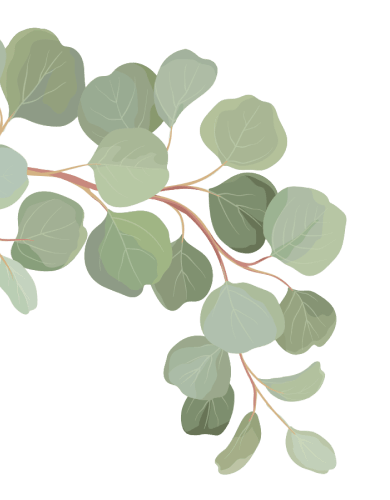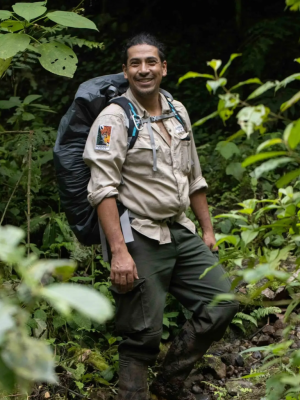

ALWAYS FROM NATURE
ECOMINGA’s 20th Anniversary Ecotour & Celebration
Galápagos Islands and Tropical Andes Mountains
Join us January 9 – 23, 2026, on a botany field program across one of the most diverse countries on Earth, from the Inter-Andean Valley to the Galápagos Islands and beyond, featuring several national parks and ECOMINGA reserves. Please review the program’s terms and conditions and register using the link below.
This program benefits Fundación ECOMINGA, a conservation NGO that has been protecting areas of high biodiversity and endemism across Ecuador for 20 years.
Follow in the footsteps of renowned naturalists like Humboldt, Jameson, André, Spruce, and Darwin, as you journey through the Ecuadorian Andes and the Galapagos Islands. Explore a variety of biodiversity hotspots, from the páramo, at 4,000 meters above sea level, down to the Andean-tropical, cloud, and foothill forests at 900 meters. Discover the magical endemism forged over millennia of evolution in botanical form, color, scent, and flavor. Every moment is an opportunity to uncover the delicate bonds between plants, sun, wind, water, and the pollinators and seed dispersers that sustain them. Everything you find, from breathtaking flowers to tiny blossoms as delicate as snowflakes, will enchant you. View full itinerary here.
Southam
ceo / Founder


OUR STORY
How It All Began
It was our own calling for a more holistic life that gave birth to naturis back in 2008. In a bid to escape the everyday bustle, we moved to a remote old Derbyshire cottage surrounded by farmland that was home to more cows than people and with no TV reception to speak of…
It was there that we discovered a silence that we never knew existed. In those quiet reflective moments we found a new path; natural soap making and it was love from the very first batch. It changed everything and in the coming months, we took a leap of faith and gave up the 9-5 to chase a new dream.
The years have flown and today, over a decade later while that little cottage is just a memory, every day we can still be found behind the doors of our workshop, using slow unhurried methods to mindfully bring our natural products to life. At the heart of each one lies a blend of essential oils consciously created to help reconnect your mind, body and spirit.
WHO ARE WE?
Behind The Brand
their ingredients provide and how they make you feel.

Leanna Doolin
Leanna is the creative force behind naturis, using her life long love for essential oils to intuitively create aromatherapy products for women who want to create more calm and mindful days.

Michael Houlden
Michael is the more technically minded side of the team. After studying his business degree, he pursued a career in logistics before the call for a more conscious life caused him to say goodbye to the traditional career ladder.

Tallulah Rose
Tallulah joined the team in 2014 but quickly moved up the ranks to become chief happiness officer, she prides herself on bringing joy into everyone’s day – including the postman – with tail wags, cuddles and kisses.
Our Team
Lorem ipsum dolor sit amet, consectetur adipisicing elit, sed do eiusmod tempor incididunt ut labore et dolore






Our happy customers



The Pure Promise
We use nature’s most precious elements to make non-toxic skincare products that support
radiant skin, a healthy body + a happy self.
No Artificial Anything
We use nature's most precious elements and nothing more.
Sustainably Sourced
From small family farms to wildcrafted botanicals to ethically...
Made In The USA
Handcrafted with love in sunny southern California.
Happiness Guaranteed
If you're not 100% satisfied, we’ll give you your money back.

Program Leaders
Javier Robayo is Executive Director of ECOMINGA. As a biologist and educator, he has led more than 200 research and teaching expeditions in Ecuador. His field work has led to the discovery of more than 10 species of orchids, a new genus containing two species of rodents, a new genus of frog, and five other species of amphibians. In 2022, he was named one of “50 People Changing the World” by The Explorers Club.
Fees & Dates
$8,480 per person – Early Bird Rate for registration before or on June 15, 2025
$8,655 per person – Standard Rate for registration after June 15, 2025
$800 unrecoverable deposit per person due upon registration
The balance of program fees is due on August 1, 2025 or upon registration, whichever is later.
The program starts at 3pm on January 25th and ends in the evening of February 11th at Hotel Casa Foch in Quito.
Fees Include lodging, meals, in-country travel, and academic, cultural, and nature activities. One airport transfer is included.
Fees Do Not Include the following required out-of-pocket expenses:
• International airline tickets
• Transportation to Casa Foch from Quito’s airport upon arrival
• Room and board outside program start and end dates
• Up to four (4) meals during the program
• $200-$350 cash for gratuities
• $220 cash for Galápagos entry fees
Please Note:
Accommodations: Only double accommodations (two people per room) are available at this time; you will have a roommate. Register with a roommate, arrange for a friend to sign up, or we’ll help pair you with a roommate.
Passport: Ecuador requires that your passport is valid for at least six (6) months upon your arrival in order to enter the country. If you need to apply for or renew a passport, we suggest doing so as early as possible.
Insurance: The program may be modified or canceled at any time due to unforeseen circumstances. Program fees do not include travel insurance, medical insurance, or evacuation insurance. It is the participant’s responsibility to purchase insurance at their own discretion. While not a requirement, insurance can provide peace of mind when preparing for a program abroad.
International Flights: Nearly all international arrivals to Quito’s airport (UIO) land late at night—an hour or two before or after midnight. Your departure flight will also likely leave late at night or early in the morning. Take extra care when booking your tickets to ensure they are on the days you intend. We’re happy to provide suggestions regarding international flights and lodging around your arrival and departure. If you’re interested in staying longer in Ecuador, you can arrange your arrival and departure to fit your schedule.
Arrivals: The program begins late in the afternoon on Sunday, January 25, at boutique hotel Casa Foch in Quito’s La Mariscal district. Your flight from the U.S. should depart at the latest on Saturday, January 25. Your lodging begins at Hotel Casa Foch on January 25, with check-in at 1pm.
Departures: The program ends on Thursday, February 11, after arriving back in Quito from Mindo. For participants who choose to depart this evening, your flight should depart no earlier than 10pm on February 11.
Activities and Accessibility: Planned activities include easy to moderate hikes in remote sites of varying altitude and conditions, as well as boat rides and optional snorkeling. Unfortunately, not all forms of transportation or sites visited on this program are fully ADA compliant. EcoStudio Foundation is committed to creating educational experiences that are accessible to all, and our team is working with on-site partners to upgrade facilities and develop more inclusive activities. Please get in touch if you have questions or concerns regarding accessibility.
